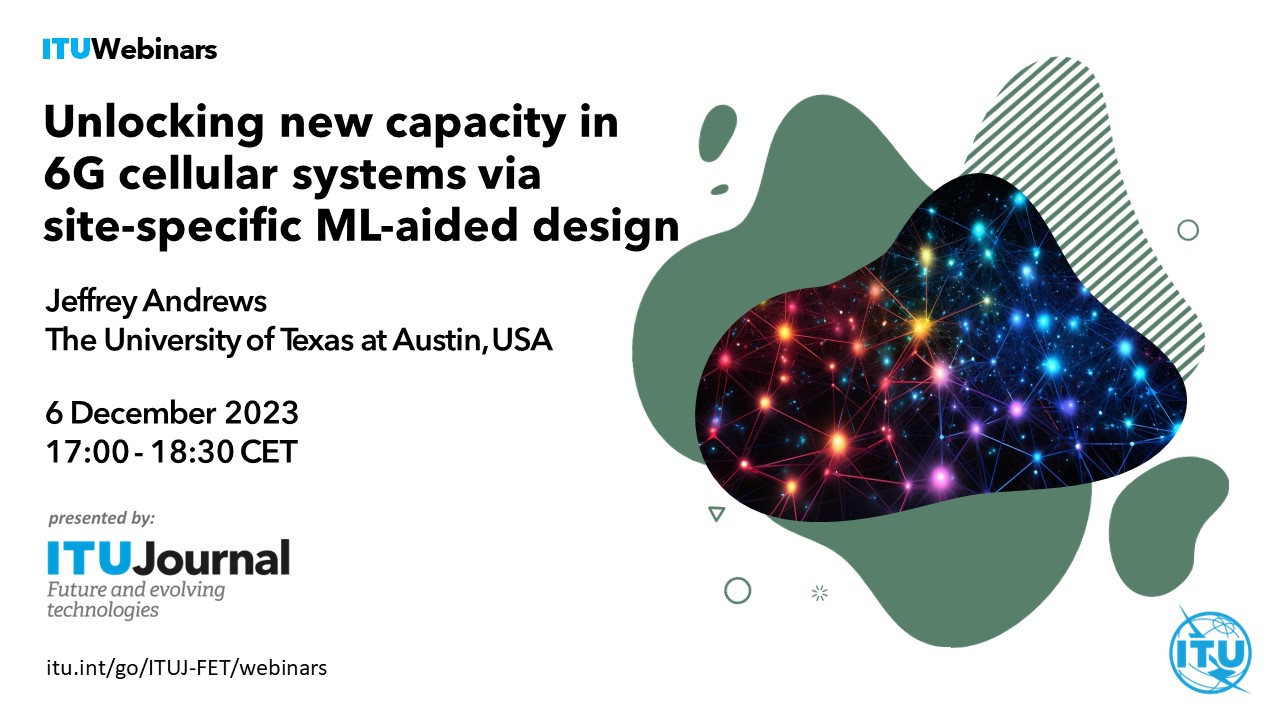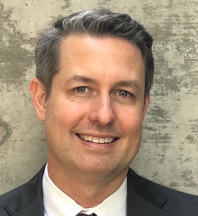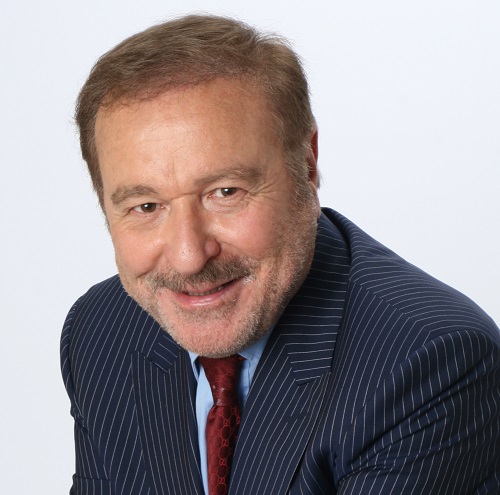
TALK
6G cellular networks will be extremely complex systems that must meet many competing requirements in a large variety of environments and use cases. A key enabling 6G technology will be deep learning, which can unlock previously hidden system-level gains, particularly by effectively learning custom site-specific communication techniques that are optimally adapted for each cell-site. Prof. Jeffrey Andrews presented a short summary of some of his group’s recent discoveries and technologies based on deep learning (DL) that demonstrate a large potential impact in 6G. The first is a novel and practical approach for beam alignment in millimeter wave and THz bands that can achieve a phenomenal speed up, at least 10x and in some cases approaching 1000x, by sensing and exploiting unique aspects of the environment. The second is a new architecture for estimating high dimensional channels by harnessing the expressive power of deep generative networks to develop a custom model of each cell’s channel distribution. The third is a site-specific multicell optimization that rapidly learns near-optimal global settings for each base stations antenna arrays, a problem that is completely intractable using conventional techniques. It is trained and tested on AT&T’s commercial simulation platform and shows large gains over existing 3GPP approaches.
WISDOM CORNER: LIVE LIFE LESSONS
Participants had the chance to hear from Prof. Andrews about his impactful life lessons over the years as well as his advice to young researchers in the field of information and communication technologies.
 | Jeffrey Andrews is the Truchard Family Endowed Chair in Engineering at the University of Texas at Austin where is Director of 6G@UT. He received the B.S. in Engineering with High Distinction from Harvey Mudd College, and the M.S. and Ph.D. in Electrical Engineering from Stanford University.
Dr. Andrews is an IEEE Fellow and ISI Highly Cited Researcher and has been co-recipient of 15 best paper awards including the 2016 IEEE Communications Society & Information Theory Society Joint Paper Award, the 2014 IEEE Stephen O. Rice Prize, the 2014 and 2018 IEEE Leonard G. Abraham Prize, the 2011 and 2016 IEEE Heinrich Hertz Prize, and the 2010 IEEE ComSoc Best Tutorial Paper Award. His other major awards include the 2015 Terman Award, the NSF CAREER Award, the 2021 Gordon Lepley Memorial Teaching Award, the 2021 IEEE ComSoc Joe LoCicero Service Award, the IEEE ComSoc Wireless Communications Technical Committee Recognition Award, and the 2019 IEEE Kiyo Tomiyasu technical field award.
His former PhD students include five IEEE Fellows, several professors at top universities in the USA, Asia, and Europe, and industry leaders on LTE and 5G systems, on which they collectively hold over two thousand US patents.
|

|
MODERATOR: Ian F. Akyildiz, ITU J-FET Editor-in-Chief and Truva Inc., USA
|
WATCH RECORDING